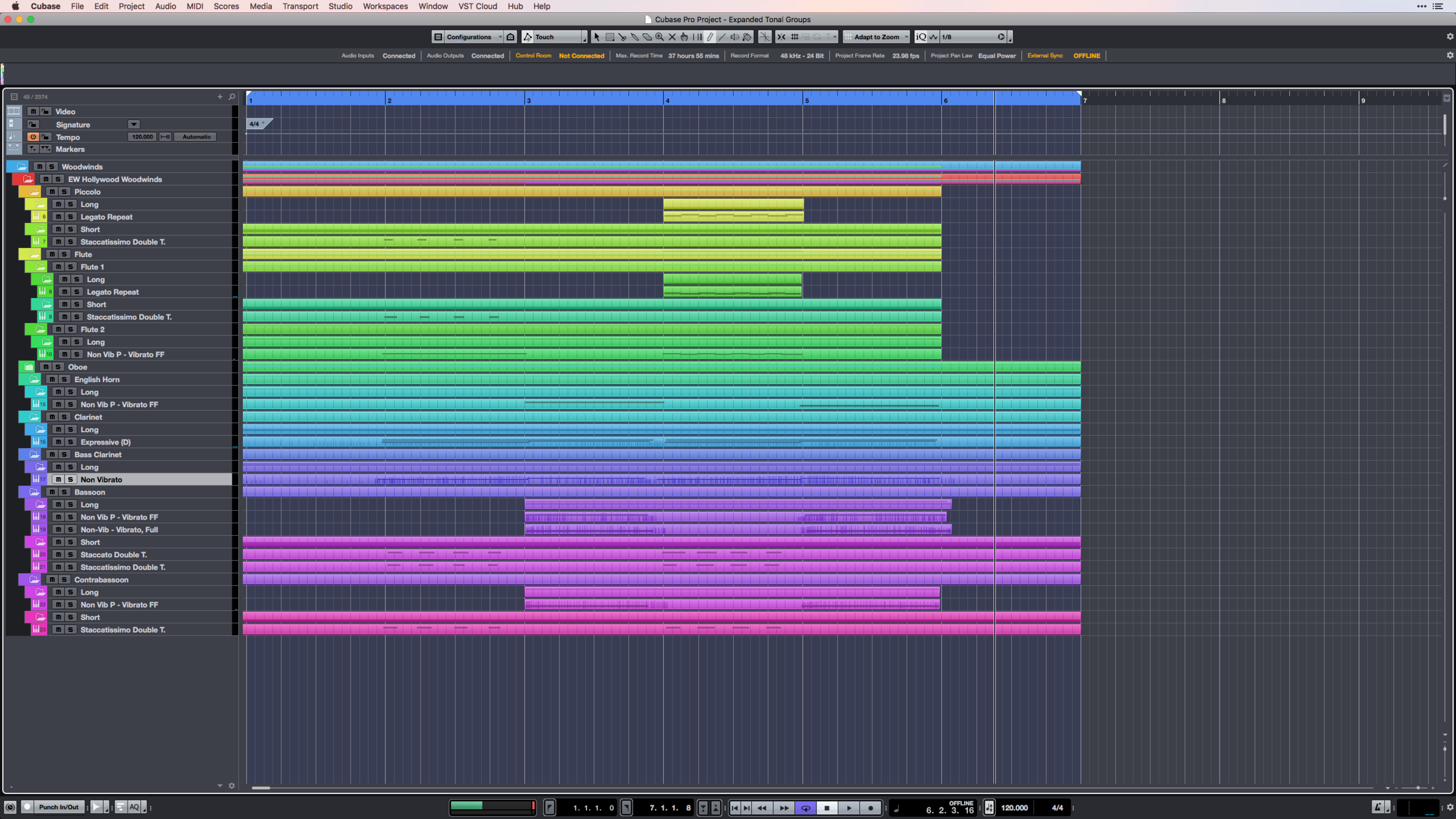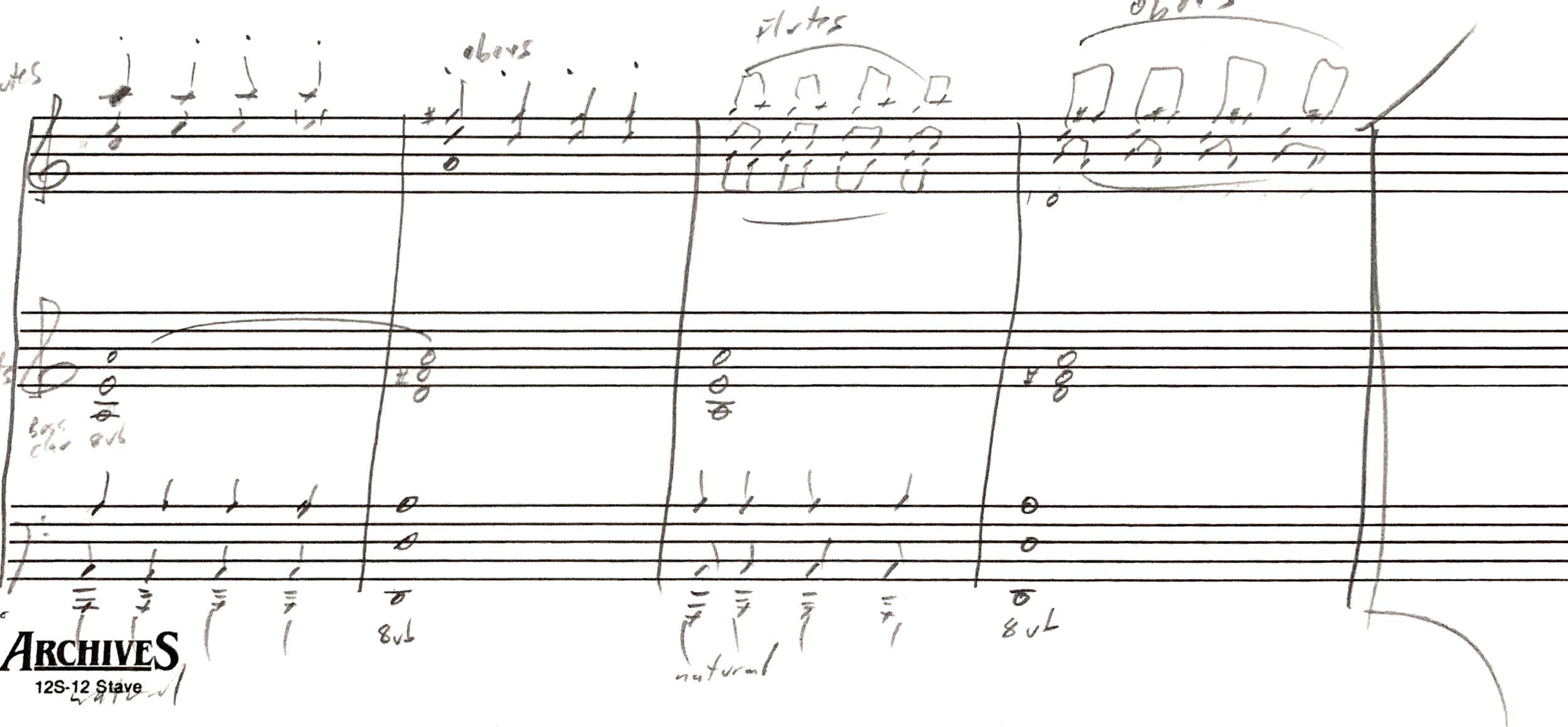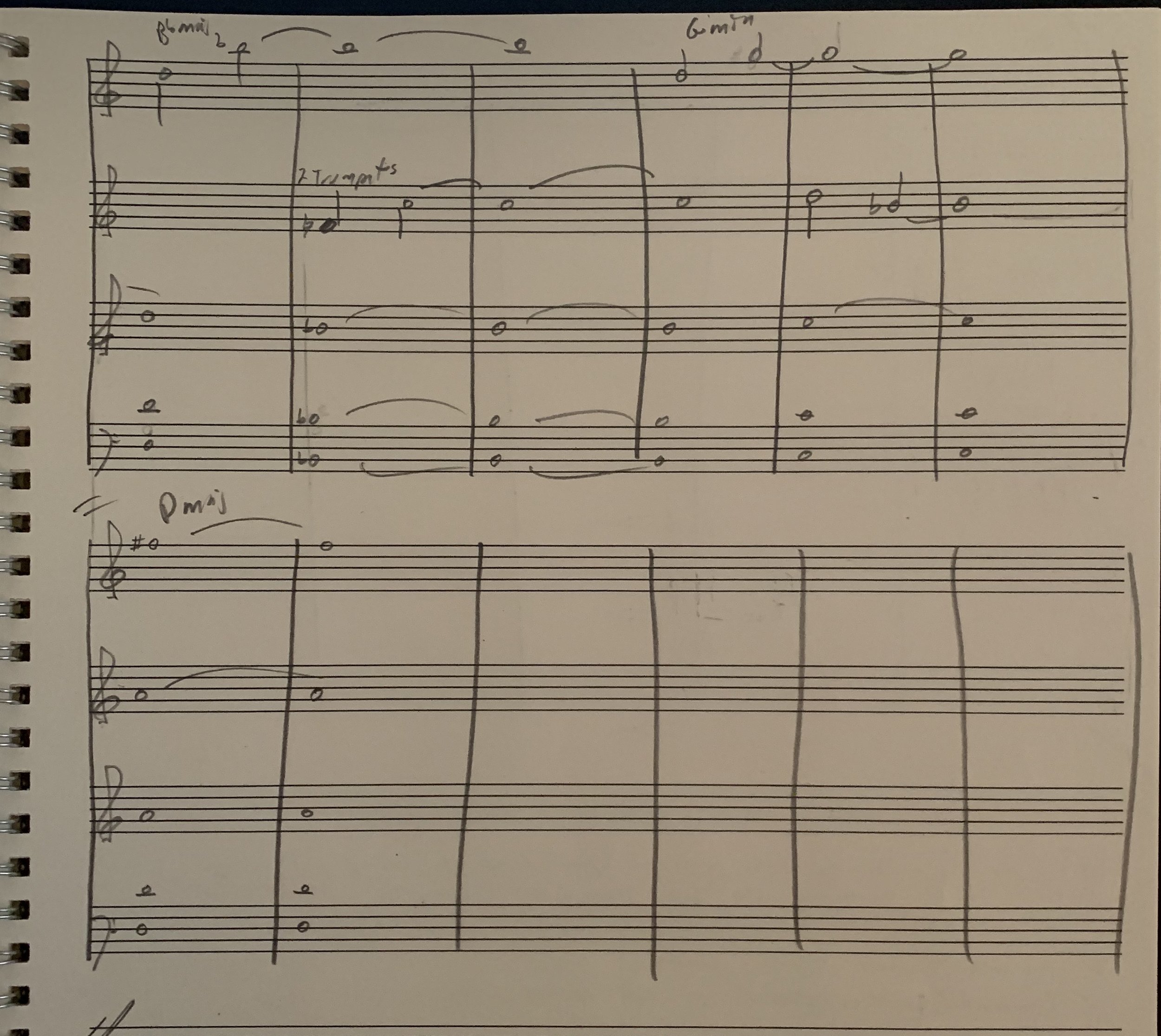24 second epic drum cue sketch: WARNING! THIS IS LOUD! Taiko drums, toms, chinese tam tam, french horn ensemble, tremolo strings:
When can the woodwind section be useful in a film?
When you have filmed a scene that you feel needs some movement, but the vibe shouldn’t be heavy. You can think of it like having pastoral vibes, not unlike running through a meadow. Think of two kids talking to each other about life, watching the clouds go by in the afternoon. Think two lovers chasing each other through a sunny and sparse farmland. Think youthful dreaming and optimism.
I have often used woodwinds as a color substitute for strings, and often for a balance between other instruments outside of the orchestra. To me, I think one of it’s strengths is in it’s color variety.
Music*
Score**
Budget
If recorded in Austin with me conducting and I was able to contract the right people for the job, this cue would cost an estimated $1,150 to record with live musicians.
Why so expensive for a 10 second cue?
When you buy tiny fractions of time of the musicians, you still have to pay them for even getting to the studio. Therefore, as a filmmaker, if you want to go the orchestral route for your story, think bigger. Getting musicians in the studio for a 10 second cue is much more expensive per capita than getting them in there for 30 minutes of playing.
Light, Colorful, and Rhythmic composed by Dave Wirth. Copyright and Published 2019 Fire, Fire, Red Star Down! ASCAP. All Rights Reserved.
**Score for Light, Colorful, and Rhythmic is copyright and published 2019 Fire, Fire, Red Star Down! ASCAP. All Rights Reserved.
The Epic Cue is very much in vogue nowadays in film music. It’s an exciting, awe-inspiring cue, one that is meant to bedazzle and overwhelm us with sound and fury, like when we see the culmination of an epic battle scene:
Music*
The Score**
Ingredients
Melody
Sustained chord
16th notes
Drums and percussion
Sound effects interspersed for interest and surprise, usually lower than 100hz.
Cooking Directions
Set your tempo to around 130 bpm.
Create a melody that sounds epic, but orchestrate it with either choir or brass. French horn and female ahhhs are favorites.
Create a sustaining chord background, usually with some brass and maybe woodwinds (though woodwinds are probably overpowered by the brass in this orchestration). In the example above, I placed two trombones in an octave from each other, and then I added a French horn choir. The harmony was minimal, as I preferred other parts of the ensemble to do that job.
Create 16th note part. 16th notes can be played by strings (because of their agility and ease of playing) or synths. In this case, I used a pandiatonic string section with lots of measured tremelos, and I created a synth arpeggiator that changed according to my finger placement on an X/Y pad.
Next, add drums and percussion. can be just about anything, but Taiko drums, snares, drum sets, and techno-style electronic drums are super common.
Finally, add of sound effects to maintain surprise. I decided not to add any to this specific cue.
*Epic Cue 1 composed by Dave Wirth, Copyright and Published 2019 Fire, Fire, Red Star Down! ASCAP. All Rights Reserved.
**Score is Published 2019 Fire, Fire, Red Star Down! ASCAP
I can’t imagine a better name for this effect:
I have been committing to memory all of the transpositions of the orchestra. My intent is to begin writing in their transposed pitches as opposed to concert key. I’ve started with the flute family.
I called the Db Piccolo the Db Pickle, and the C Piccolo the C Pickle.
Off to the coffee pot…





